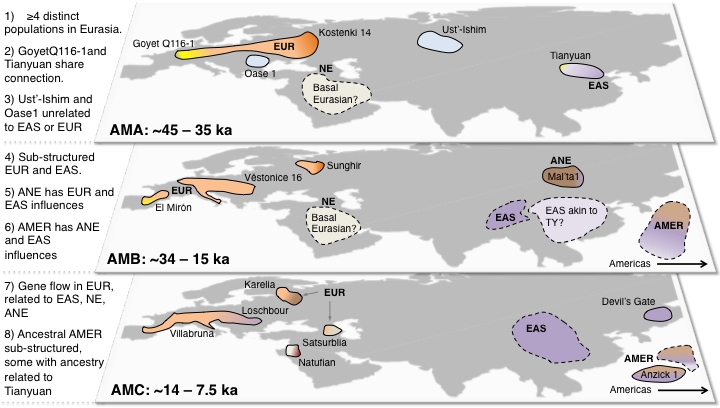报告人:Melinda A. Yang
报告题目:Ancient Human Genomics of East Asia
合作导师:付巧妹
时间:2019年7月19日上午9:30
地点:办公楼702室
评审委员会主席:刘武
委员:裴树文 同号文 吴秀杰 付巧妹
内容简介:Using genome-wide data from ancient humans from China, we examine the prehistory of humans from East Asia from 40,000 years ago until the present-day. We compare present-day and ancient populations to a 40,000-year-old anatomically modern human from Tianyuan Cave near Beijing. This individual is more related to present-day and ancient Asians than he is to Europeans, but shares more alleles with a 35,000-year-old European individual than with other ancient Europeans, indicating that the separation between early Europeans and early Asians was not a single population split. The Tianyuan individual shares more alleles with some Native American groups in South America than with Native Americans elsewhere providing further support for population substructure in Asia and suggesting that this persisted from 40,000 years ago until the colonization of the Americas. This first early modern human from Asia highlights the complex migration and subdivision of early human populations in Eurasia. We then move to the period from 5,200-300 years ago on and near the Tibetan Plateau, where we explore the relationship between Neolithic populations in these high elevation regions. On the plateau, ancient populations further east dating up to 3,100 BP share the closest relationship to their lowland neighbors northeast of the plateau in the Gansu-Qinghai region, rather than those living contemporaneously on the western end of the plateau. In contrast, most Tibetans living on the plateau today share the closest relationship to the ancient western plateau populations, highlighting a recent ancestry shift on Tibetan Plateau driven by the expansion of western plateau related ancestry. On the northeastern margins of the plateau, Gansu-Qinghai populations show prominent broad East Asian connections after 3,900 BP, coinciding with the appearance of wheat and barley. Gene flow within the plateau and from the eastern neighbors has profoundly shaped the human genetic landscape on and near the Tibetan Plateau.

Figure Schematic of populations in Eurasia and the Americas (bottom right) during Ancient Modern A (AMA, ~45-35 ka), Ancient Modern B (AMB, ~34-15 ka) and Ancient Modern C (AMC, ~14-7.5 ka).
研究生部
二零一九年七月十二日